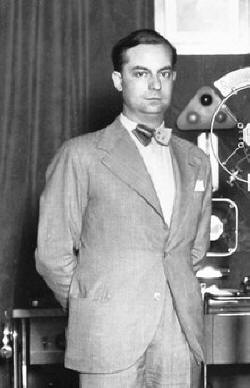

Partner Serafín Ferro
Queer Places:
Cemitério de San Francisco, Rúa Estrada da Granxa, 32004 Ourense, Spain
 Eduardo
Modesto Blanco Amor (Orense , September 14, 1897 - Vigo , December 1 , 1979)
was a Spanish writer and journalist who wrote in both Galician and Spanish.
1 Román Gubern writes about the gay group which surrounded
Salvador Dalí and
Federico García
Lorca (among them,
Luis Cernuda, Benjamín Palencia,
Juan Gil-Albert,
Vicente
Aleixandre, Gustavo Durán and
Eduardo Blanco Amor) men who were “compañeros
de [la] constelación cultural de García Lorca”. In Madrid
Serafín Ferro worked in the
printing press of Manuel Altolaguirre and contacted the theatrical world, to the point of returning to La Coruña and directing the Keltya group to represent works by Yeats and Álvaro de las Casas, a project praised by Antón Villar Ponte. During that time he met Eduardo Blanco Amor.
Eduardo
Modesto Blanco Amor (Orense , September 14, 1897 - Vigo , December 1 , 1979)
was a Spanish writer and journalist who wrote in both Galician and Spanish.
1 Román Gubern writes about the gay group which surrounded
Salvador Dalí and
Federico García
Lorca (among them,
Luis Cernuda, Benjamín Palencia,
Juan Gil-Albert,
Vicente
Aleixandre, Gustavo Durán and
Eduardo Blanco Amor) men who were “compañeros
de [la] constelación cultural de García Lorca”. In Madrid
Serafín Ferro worked in the
printing press of Manuel Altolaguirre and contacted the theatrical world, to the point of returning to La Coruña and directing the Keltya group to represent works by Yeats and Álvaro de las Casas, a project praised by Antón Villar Ponte. During that time he met Eduardo Blanco Amor.
His father left the family home when Eduardo was only three years old. In 1915 , at the age of seventeen, he began working as secretary of management at El Diario de Orense. During this time he frequented the gatherings of Vicente Risco, figure that had a decisive importance in his future defense and promotion of Galician culture. In 1919 he emigrated to Buenos Aires (Argentina), where he maintained his contacts with Galician intellectual immigrants, taking an active part in the Federation of Galician Societies, founded in 1921, which aimed to unite all Galician immigrants. In 1923 he founded the magazine Terra with Ramiro Isla Couto, in the Galician language. In 1926 he became part of the Argentine newspaper La Nación, where he met Argentine writers such as Leopoldo Lugones, Borges, Sabato and Mallea, and Uruguayans like Horacio Quiroga.
In 1927 he began his literary career, with the novel Os Nonnatos, which was followed, the following year, the book of poems Romances Galegos.
Also this year and in Buenos Aires, he participates with Domingo Rial Seijo, Ramón Suárez Picallo and Ramón Peña in the refoundation of the magazine Celtiga.
In 1928 he returned to Galicia as a correspondent for the newspaper La Nación . During this first return he met Castelao and several intellectuals of the Galeguista Party and the Nós group, and wrote Poema en catro tempos , which he published later in Argentina in 1931. From Buenos Aires he later collaborated with the magazine Nós with several poems and three chapters of his inconclusive novel A escadeira de Jacob .
He returned to settle in Spain as a correspondent for La Nación between 1933 and 1935, and met Federico García Lorca in Madrid, to whom he joined a great friendship; Blanco was the one who published the Six Galician Poems (1935) by Lorca.
He defended the Republican cause from Argentina when the outbreak of the Spanish Civil War occurred. During the following 20 years he used Spanish exclusively in his literary work, with works such as Los miedo (1936) or La catedral y el niño (1948). In 1956 he returned to Galician with Cancioneiro, and in 1959 he published a novel of great importance for the renovation of the Galician narrative, Parranda (original title in Galician: A esmorga).
In Buenos Aires he founded and directed the Teatro Popular Galego. He was also director of the magazine Galicia, published by the Galician Center of Buenos Aires.
He returned to Spain in 1965, and published another work that had great impact, the story book Os biosbardos (1962). Its last stage was very fruitful, in spite of being postponed by the official culture: in 1970 it gave birth to a new edition of A esmorga, and in 1972 the extensive novel Xente ao lonxe appeared. In his last years he paid great attention to the theatrical genre, with works such as Farsas para Títeres (1973) and Teatro para xente (1975).
He died in Vigo on December 1, 1979. His remains rest in the San Francisco Cemetery (Orense).
Many of his narrative works (A esmorga , Xente ao lonxe , Os biosbardos) take place in a fictional city, Auria, a literary transposition of his native Orense. Critics have found in their fictions echoes of authors such as Valle-Inclán or Eça de Queirós.
My published books: